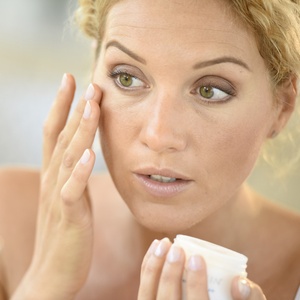Blog
Welcome to FaceForward
Get the scoop on all things beauty, wellness, and skincare.

In 1969, Dr. James Fulton, Jr. and Dr. Albert Kligman co-discovered tretinoin, also known as retinoic acid (and later branded Retin-A), a revolutionary medication to treat acne vulgaris. Fulton had suffered from severe acne throughout his adolescence and understood the self-esteem and social difficulties teenagers with acne experience. Fulton is also famous for claiming that chocolate was not the primary cause of acne. His case study, called "The Effect of Chocolate on Acne Vulgaris" was not taken seriously by other dermatologists, at that time, who didn’t know about the impact that hormones and genetics have on the development of acne.
Shortly after, in 1971, the pharmaceutical company Johnson & Johnson launched tretinoin under the brand name Retin-A®. It was a popular product, and Johnson & Johnson held on to Retin-A until 2011.
After Fulton created tretinoin (Retin A) with Kligman, he and fellow dermatologist Dr. Harvey Blank later produced topical erythromycin and benzoyl peroxide gel. These two medications are also approved by the FDA for the treatment of acne.
Today, most people will receive tretinoin as a generic medication, sometimes as an ingredient in a more complex formulation of skincare ingredients. Retin-A is still a commonly used term, however, and some people use the two interchangeably.
Retin-A versus tretinoin? Same thing. Here’s what you should know.
Tretinoin is the active ingredient that gives Retin-A its capabilities, but Retin-A also contains varying amounts of inactive substances that are necessary to forming a cream or gel vehicle. How much of each substance is included in Retin-A depends on the percentage of tretinoin prescribed:
Tretinoin is the ingredient responsible for minimizing acne breakouts, reducing wrinkles, and diminishing age spots, and it works by speeding up the rate at which your skin grows and heals. Chemically, it is retinoic acid, which is the substance that binds to Retinoic Acid Receptors in your skin and triggers this process.
The root cause of acne involves the abnormal and rapid shedding (desquamation) of dead skin cells in and around hair follicles. What makes this shedding abnormal is that dead cells don't fall off the skin as quickly as they do in people without acne. Instead, desquamation leads to clogged pores, bacterial infection, inflammation, and ultimately acne breakouts.
Retin-A helps regulate the process of desquamation, which reduces the emergence of microcomedones (invisible "seeds" of acne blemishes) and comedones (acne lesions between 2mm and 3mm in diameter). It does this by speeding up how your skin brings new cells to the surface, sweeping debris from follicles in the process.
Dermatologists sometimes prescribe Retin-A and antibiotics simultaneously to treat acne. Antibiotics decrease bacteria populations in and around follicles to help minimize inflammation, redness, and soreness. They reduce the risk of small infections that can lead to pimples.
Over the decades of prescribing Retin-A for acne, dermatologists began observing another benefit of tretinoin: a remarkable reduction in wrinkles, discolorations, and dryness caused by photoaging.
Photoaging is the clinical term that describes skin damage due to excessive exposure to sunlight. Retin-A rejuvenates sun-damaged skin by exfoliating dead skin cells and stimulating the growth of new epidermal cells. Eliminating dead skin cells leaves behind smoother, more elastic, more evenly toned skin. In addition, Retin-A-treated skin feels softer and looks healthier. Retin-A also condenses collagen bundles just underneath the surface of the skin by activating certain proteins. This encourages skin tightening to further diminish the appearance of fine lines and wrinkles.
The following information about how to use Retin-A comes right from current U.S. FDA documents:
Most side effects associated with Retin-A use do not require medical attention. Redness, itchiness, and mild peeling of the skin are temporary and usually subside within several weeks. Other common side effects of Retin-A may include:
When side effects make it too uncomfortable or impossible to continue to apply Retin-A, users should always call their doctor to report serious symptoms.
Several studies have found that Retin-A is safe for long-term use. An American Journal of Clinical Dermatology article states that Retin A (tretinoin) for acne is "suitable as a long-term medication that does not reduce the skin's ability to resist bacteria". Another study that investigated the effects of Retin-A on photodamaged skin reported tretinoin provided "safe and continued improvement" after subjects applied Retin-A for four consecutive years.
Retin-A has been rigorously tested in numerous controlled clinical trials. Results of all trials indicated that Retin-A has been proven effective and safe to use for treating acne and photodamaged skin. Highlights of these studies include:
In addition to providing an excellent and safe long-term treatment regimen for acne and photodamaged skin, a case history involving the use of Retin-A for treating melanoma-in-situs (MISs), or skin cancer, was recently published in Dermatology and Therapy.
Due to pandemic restrictions, a doctor treated a MISs patient through telemedicine technology. The patient applied tretinoin 0.1% cream, imiquimod 5% cream, and 5-fluorouracil 2% solution to melanoma lesions. The treatment proved to be successful, according to the report. Normally, this type of melanoma would be surgically removed instead of being treated with topical medications, so this case study is a unique approach.
Curious if Retin-A or tretinoin is right for you?
If you're dealing with persistent acne or just want smoother skin, tretinoin may be right for you, and telemedicine (like in the study above) is making great skincare much easier.
Generic tretinoin or Retin-A is available only with a prescription, and platforms like Nava MD help men and women access skincare formulas for common conditions like acne and wrinkling from the comfort of home. Your solution is custom-made for you, your consultation is free, and the whole process is fast and easy.
Click here to get started with Nava MD.
This article is intended for informational purposes only and should not be considered medical advice.
Consult a healthcare professional or call a doctor in the case of a medical emergency